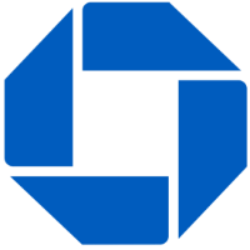Overall, JPMorgan Chase demonstrates a strong business quality with robust financial performance and market leadership. However, challenges such as margin compression and increasing credit costs pose risks. Future prospects indicate growth potential in digital banking and investment banking, but uncertainties regarding NII and economic recovery could impact overall performance.
Analysis Date: January 15, 2025
Last Updated: March 12, 2025
Trailing Twelve Months (TTM) values provide a view of the company's performance over the last year.
Graham Value Metrics
Benjamin Graham's value investing approach focuses on finding stocks with a significant margin of safety between their intrinsic value and market price.
Intrinsic Value
Estimated fair value based on Graham's formula
$793.52
Current Market Price: $207.26
IV/P Ratio: 3.83x (>1.0 indicates undervalued)
Margin of Safety
Gap between intrinsic value and market price
74.0%
Graham recommended a minimum of 20-30% margin of safety
Higher values indicate a greater potential discount to fair value
ROE: 17.270784902854547
ROA: 0.34987886022183395
Gross Profit Margin: 100.0
Net Profit Margin: 32.96183550369243
Trailing Twelve Months (TTM) values provide a view of the company's performance over the last year.
Strong Return on Equity
JPM demonstrates a solid Return on Equity (ROE) of 17.10%, reflecting effective management in generating profits from shareholders' equity.
High Net Profit Margin
The Net Profit Margin of 32.96% indicates that JPM retains a significant portion of revenue as profit, showing good operational efficiency.
Low Gross Profit Margin
100.0
Gross Profit Margin
A Gross Profit Margin of 100% suggests high revenue but also raises concerns about the sustainability of this figure, as it may not accurately reflect operational efficiency.
About Profitability Metrics
Profitability metrics measure a company's ability to generate earnings relative to its revenue, operating costs, and other relevant metrics. Higher values generally indicate better performance.
Return on Equity (ROE)
Measures how efficiently a company uses its equity to generate profits
17.27%
10%
15%
Higher values indicate better returns for shareholders
TTM (as of 2025-04-16)
Return on Assets (ROA)
Measures how efficiently a company uses its assets to generate profits
0.35%
3%
7%
Higher values indicate better asset utilization
TTM (as of 2025-04-16)
Gross Profit Margin
Percentage of revenue retained after accounting for cost of goods sold
100.00%
20%
40%
Higher values indicate better efficiency in production
TTM (as of 2025-04-16)
Net Profit Margin
Percentage of revenue retained after accounting for all expenses
32.96%
8%
15%
Higher values indicate better overall profitability
TTM (as of 2025-04-16)
Strong Liquidity Ratios
JPM's Current Ratio of 6.02 and Quick Ratio of 6.02 indicate excellent liquidity, showing that the company can easily cover its short-term obligations.
Low Debt to Assets Ratio
A Debt to Assets ratio of 11.35% shows that JPM is not overly leveraged, indicating a solid financial foundation with manageable debt levels.
High Debt to Equity Ratio
1.32
Debt to Equity Ratio
The Debt to Equity Ratio of 1.32 suggests that JPM has a relatively high level of debt compared to its equity, which could pose risks in a downturn.
Negative Free Cash Flow per Share
-20.45
Free Cash Flow per Share
With Free Cash Flow per Share at -20.45, JPM is currently not generating positive free cash flow, which can affect its ability to invest and return value to shareholders.
About Financial Health Metrics
Financial health metrics assess a company's ability to meet its financial obligations and its overall financial stability.
Debt to Equity Ratio
Total debt divided by total equity
1.32x
1.0x
2.0x
Lower values indicate less financial leverage and risk
Less than 1.0 is conservative, 1.0-2.0 is moderate, >2.0 indicates high risk
Q4 2024
Current Ratio
Current assets divided by current liabilities
33.35x
1.0x
2.0x
Higher values indicate better short-term liquidity
Less than 1.0 is concerning, 1.0-2.0 is adequate, greater than 2.0 is good
Q4 2024


